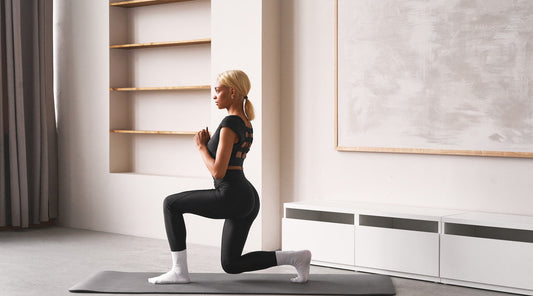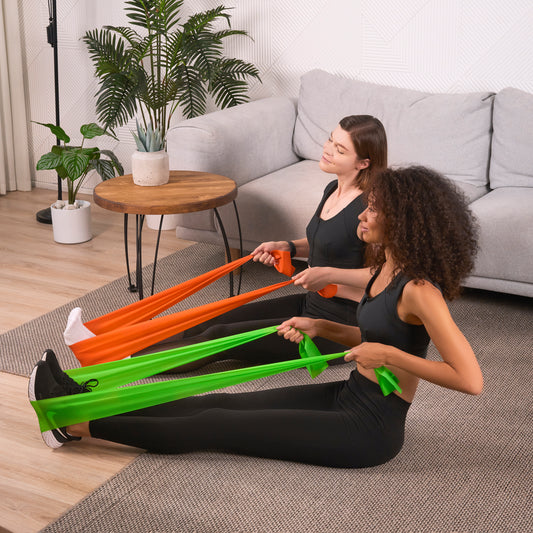Good postural habits can aid you with everyday activities like walking up or down stairs, getting out of a chair, or simply looking behind you, whether you're an athlete or not.
Bad posture is more common than we realize, and it can lead to the development of serious health issues.
Poor posture makes us seem less than our best selves and can result in several long-term, chronic health problems, such as headaches or back pain. Habits that cause bad posture over time can lead to chronic weariness, herniated discs, and impaired physical performance.
Bad posture can result in long-term health problems, pain, and discomfort. Improving general well-being requires recognizing and breaking these patterns early. A forward head position, rounded shoulders, and slouching are typical indicators of bad posture.
By being aware of how to break bad posture habits, you can greatly lower your chance of injury and enhance your posture.
Common Postural Habits That Cause Bad Posture
Everyday Habits That Lead to Slouching
Slouching can be caused by a number of daily routines, frequently without our knowledge. These include:
- Sitting for extended periods. Extended sitting, particularly in chairs with poor design, promotes a forward-leaning head and rounded back.
- Looking down at devices. Slumping can result from prolonged neck and upper back strain caused by looking down at phones, tablets, or laptops.
- Slouching while standing. Over time, poor posture habits, such as leaning forward or shifting weight to one leg, can weaken poor standing posture.
- Lifting incorrectly can result in poor posture and back strain. Bending at the waist rather than using your knees might also cause this.
- Weak core muscles. Slumping, particularly when standing or sitting, is caused by a weak core, which makes it more difficult to support your spine correctly.
You can fix slouching habits and enhance your posture by being aware of these behaviors and making minor changes.
Workplace and Desk-Related Posture Bad Habits
Typical improper posture habits at work include:
- Slouching. The spine is strained when one sits with a round back.
- Poor desk setup. Uncomfortable postures are caused by improper desk or chair height.
- Looking down. Neck strain occurs when you tilt your head to look at screens.
- Crossing legs. Causes pelvic misalignment and back pain.
- Bending wrists. Bad typing technique puts stress on the shoulders and wrists.
- Sitting too long. Prolonged sitting causes weariness and stiffness.
You can correct bad posture habits by taking breaks and improving ergonomics.

Lifestyle Factors Contributing to Poor Postural Habits
The following lifestyle variables can lead to bad posture:
- Sedentary lifestyle. It's more difficult to maintain proper posture when muscles are weak from lack of exercise.
- Excessive screen time. Extended use of computers, phones, or televisions can lead to bad neck posture and slouching.
- Bad sleep positions. The spine is strained when you sleep in uncomfortable positions or on an unsupportive mattress.
- Carrying heavy goods. Shoulder and back misalignment might result from carrying heavy goods or uneven weight.
- Stress. Hunching or tightening of the neck and shoulders are common symptoms of tension from stress.
- Lack of core strength. Slouching results from weak core muscles, which make it difficult to hold the spine correctly.
How to Identify Bad Posture Habits Early
Signs and Symptoms of Poor Posture Habits
- Back and neck pain. Constant discomfort, particularly in the neck or upper back, frequently brought on by forward head posture or slouching.
- Shoulder tension. Pain or tightness in the shoulders, frequently caused by slumped shoulders.
- Headaches. Tension headaches brought on by bad posture or neck strain.
- Fatigue. The state of being exhausted or drained as a result of strained muscles and ineffective movement.
- Reduced flexibility. Muscle stiffness that makes it difficult to bend or move comfortably.
- Poor balance. Instability and trouble keeping good posture can result from weak core muscles.

Simple Ways to Fix Posture and Break Bad Habits
Effective Tips to Stop Poor Posture Habits
The following advice will help you with your posture:
- Make sure your desk, screen, and chair are all positioned correctly.
- Incorporate workouts like planks to strengthen your core muscles and support your spine.
- Every half an hour, stand up and stretch.
- Whether you're standing or sitting, regularly assess your posture.
- For improved alignment, use lumbar supports.
- Pay close attention to your back, shoulders, and chest.
Fixing bad posture habits is crucial for your health and wellness. The Etalon posture correcting bra is a helpful accessory to your outfit that assists in fixing your posture.
Exercises to Correct Bad Postural Habits
Chin Tucks
Tuck your chin gently into your chest and hold it there for five seconds, whether seated or standing straight. To strengthen your neck muscles, repeat ten repetitions.

Wall Angels
Lean against a wall with your arms at a 90-degree angle. Slowly raise and lower your arms as you slide them along the wall. Ten to fifteen times, repeat this.

Cat-Cow
While on your hands and knees, alternate between sinking your back (cow) and arching it upward (cat) to lengthen and strengthen your spine.

Bridges
Lying on your back, bend your knees, the alexa lift your hips until your knees and shoulders are straight. Release after 5 seconds of holding. To strengthen the core and lower back, repeat ten to fifteen times.

Ergonomic Adjustments to Fix Slouching Habits
- Use a lumbar cushion to support the natural curve of your lower back.
- Place your screen at eye level to prevent forward leaning.
- Make sure your elbows are at a 90-degree angle when typing.
- Use a footrest to support your feet if not touching the floor.
- Sit back in your chair to relieve strain and maintain proper alignment.
Every piece of advice serves to stop poor posture habits and improve overall health. Additionally, wearing the Etalon posture correcting bra is one of the best things you can do to correct posture.
Building Long-Term Habits for Better Postural Health
Consistency and attention are the two most essential elements of creating enduring habits for better posture. You maintain good posture throughout the day while sitting, standing, or moving. Regularly develop your core muscles with workouts like planks and bridges to help maintain your spine.
Stretching can help you become more flexible and less stressed, especially in the back, shoulders, and neck. An ergonomic workspace and half-hourly stretches and mobility breaks can help reduce tension.
Finally, be aware of your posture and alter it slightly as necessary. These routines will eventually result in long-lasting enhancements to posture and general wellness.
Conclusion
Recognizing and addressing bad posture patterns is critical to avoiding discomfort and long-term health problems. You can greatly improve your posture by recognizing poor posture, implementing ergonomic changes, strengthening important muscles, and engaging in mindfulness exercises. Consistency is essential to creating habits that promote improved posture and general well-being.
Photo by Kaboompics.com on Pexels
FAQs
What are the most common habits that cause bad posture?
How can I tell if my posture habits are affecting my health?
What is the fastest way to correct slouching habits?
Are there tools to help break bad posture habits?
How can I maintain good posture habits while working at a desk?
Trending
Try Etalon posture improvement products










